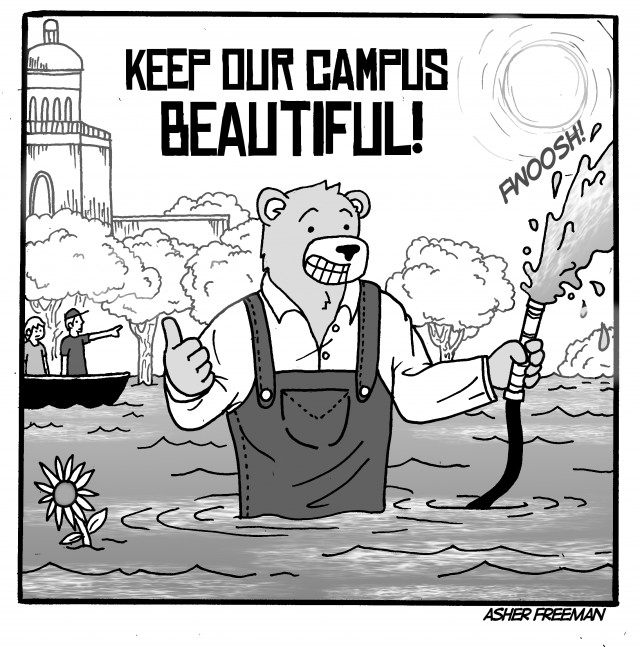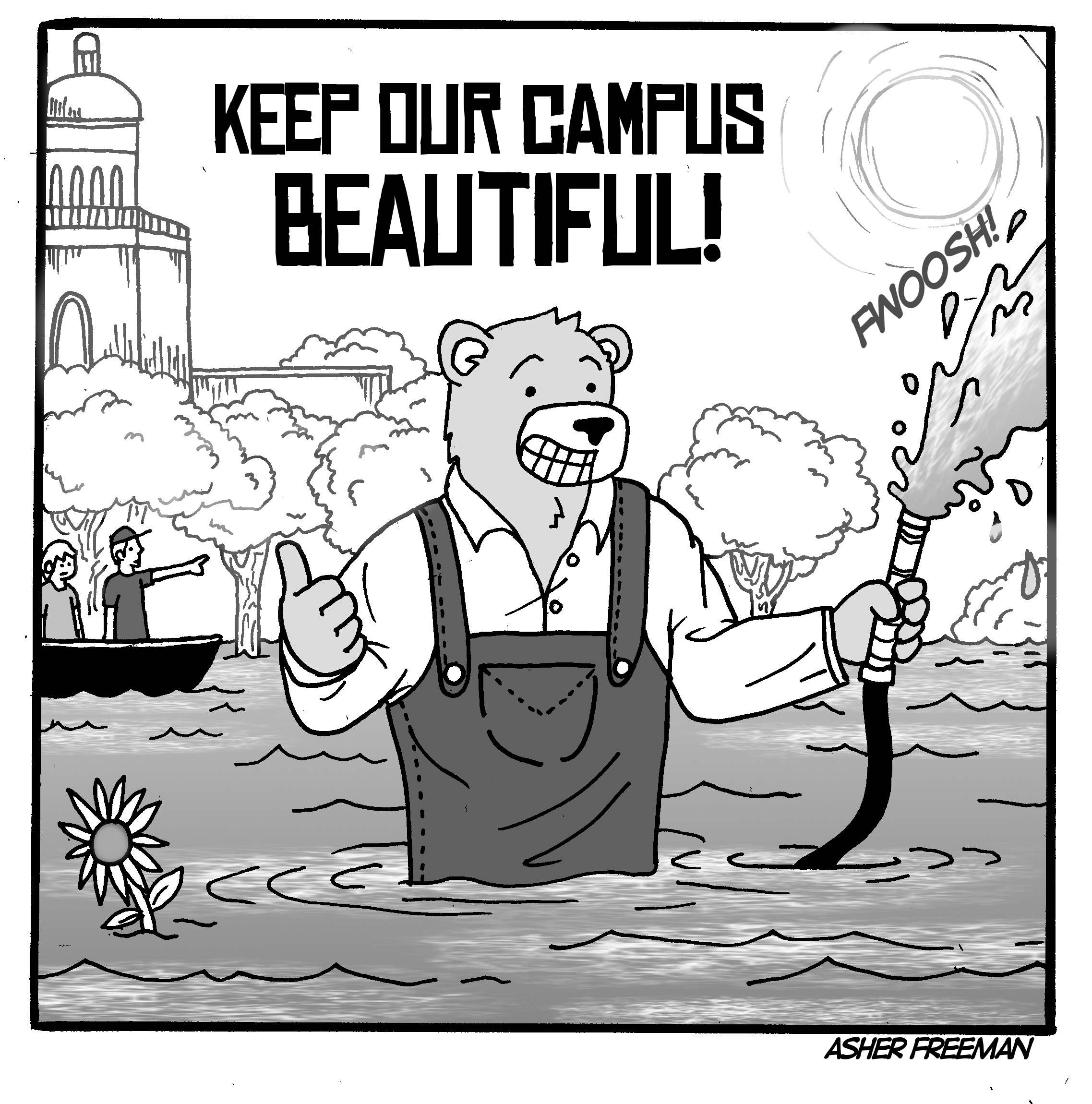 Central Texas is in a drought, but when walking on Baylor’s campus, no one would know.
Central Texas is in a drought, but when walking on Baylor’s campus, no one would know.
Campus is slowly turning into a swampland, lacking only the gators and Cajun food.
The squish of nearly every grassy patch on campus indicates the healthy dose of water that was administered overnight by way of sprinklers.
While Baylor’s campus has lush green grass, it’s coming at a price.
The main problem is it seems Baylor overwaters the grass to the point of producing muddy ground.
We can probably all agree that walking in the grass shouldn’t feel like walking through quicksand. This, however, is just a minor annoyance compared to the waste of water in a time of drought.
It’s best to conserve water during a drought, but that’s not happening at Baylor.
The sprinkler system is on a timer. The sopping wet grass indicates that the sprinklers run for much longer than they should.
They also tend to spray sidewalks. The sidewalks certainly don’t need watering, especially when students are making late-night visits to the library or walking home for the night.
What only compounds the issue is the sprinklers run even when it’s raining.
During the flash flooding in Waco on Sept. 20, it rained most of the night and well into the day. Waco received 3.11 inches of rain that day.
Students posted images on social media sites that show water running through campus, clearly portraying a Baylor campus that was not in need of water at that moment.
However, the sprinklers on campus continued to run that night and contributed to the swampy growth of Baylor.
In a storm like that, the sprinklers should be turned off.
Why use a man-made sprinkler when natural resources are available?
Watering the grass during the night is convenient because students aren’t constantly walking across campus and do not have to fear getting wet.
In addition, the water keeps Baylor’s campus green because water evaporates quicker when the sprinklers run in the sunlight.
Both of these could be accomplished without causing the grass to turn to mud.
These minor pluses are not enough to overcome the fact that Central Texas is in a drought. Baylor should do its part and help conserve water by decreasing the amount of water used to feed the grass.
When campus has received rain, the sprinklers should not run. In addition, the time the sprinklers do run on a dry day should be cut down. Adjusting all the sprinklers’ run times may prove difficult and time consuming, but the water this will conserve is worth it.
Because some sprinklers on campus tend to aim at roads and sidewalks, these should be readjusted to aim at the grass or flowers on campus.
This will cost money, but what Baylor will be saving in water bills may make up for this cost.
As Voltaire once said, “Use, do not abuse; neither abstinence nor excess ever renders man happy.”
While watering is necessary to keep Baylor beautiful, the excess watering might cause alligators to start looking for real estate on campus.
Let’s help the gators look elsewhere and conserve water by fixing the sprinklers.





